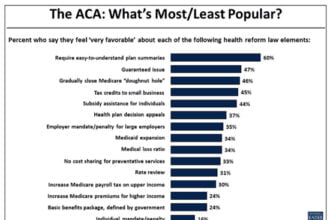Data Analytics is the practice of the use of data for driving business strategy as well as performance. It includes an array of solutions and approaches, from looking back to evaluate what occurred in the past, to predictive modelling and scenario-planning.
Since the recent couple of decades are building a big amount of data and even gathering it from other competitive organizations for standing out own company or product from the other, bringing about many heterogeneous frameworks, which create a gigantic measure of unstructured and organized information.
Big data consulting services addresses the barriers with astounding analytics services that empowers to integrate different frameworks, team up information and present it to clients in a dashboard view, to an extent that it helps clients in a dashboard view, to an extent that it helps clients with considerable bits of knowledge as well as boost systems, together with general efficiencies.
Big data analytics service caters to a system that’s highly secured and robust and capable of storing big amount of structured and unstructured data and even able to fetch and analyze real-time data, which result in visual graphs and foresight. Services and solutions make sure that the strategy implements existing data warehouse and/or BI investments.
MINIMIZE DATA CHAOS IN THE HEALTCHARE INDUSTRY
It’s too late to evade chaos in terms of data and analytics for healthcare. The madness is here, and has been around for some time. However, there are ways of launching an effective self-service analytics program.
During the Health IT and Analytics Summit in Baltimore, Maryland, Christopher Hutchins, the associate vice president of healthcare analytics for the not-for-profit health system has described how he and his colleagues cut through the confusion and opened an enterprise platform for supporting self-service analytics, accelerating data-driven learning and deepening their capabilities. Furthermore, healthcare has to battle every other industry for skilled data scientists, a costly labor force. The more data aggregation that goes on, the more stakeholders want analytics, which drive demand in the face of limited bandwidth. All the while, particularly in healthcare, companies should protect the troves of sensitive information of a patient.
KEYS FOR THE SUCCESS OF HEALTHCARE ORGANIZATIONS
The first thing to do is to define organizational priorities for access of data, using the goals for building subject-focused data marts, which enable broad inquisition. For instance, any number of areas contribute to hospital readmissions or opioid crisis. As such, corresponding data marts should comprise every aspect, instead of revolving around a single component.
Second is to ‘limit the burden of access provisioning’ through using existing models in source systems. The third is to identify business leaders in the healthcare organization who would support the use of platforms, connect colleagues and foster coordination who are working on similar projects but do not realize it.
FIVE WAYS THAT HEALTHCARE PROVIDERS COULD TRANSFORM CHAOS INTO ORDER
Here are five practical approaches to boosting patient access, minimize wait times and reduce healthcare delivery costs with no need to embark on multi-year, budget-stretching mega projects.
- Boost velocity. A hospital visit could be divided into value-added time, the time a patient spends getting treatment or undergoing a surgical procedure, and non-value-added time spent in waiting for something to happen. To boost patient satisfaction, focus the efforts on minimizing wait times.
- Start small. Complex, interconnected systems like supply chains and network routers are optimized best by ensuring that nodes are performing at capacity before focusing on velocity of the edges, which connect the nodes. Thus, optimizing demand-supply balance for individual departments on an almost-continuous basis in 15-minute chunks all through the day is the correct first step. Only then that it makes sense to boost interconnectedness, which could be represented as visiting various nodes by traveling across different edges in a particular sequence.
- Shape the demand curve. The first step in changing the demand curve is to understand that it’s not something that just ‘is’ but instead something that could be shaped and optimize for great effect. Each asset in a hospital, such as operating rooms, pharmacy, labs and others has a pronounced peak period as well as long periods of underuse on the same day, which lead to a triangular utilization profile. By flattening the demand curve, a provider could greatly reduce gridlock experience each day and open up more opportunities for more patients to get care while leveling workload for nurses and staff.
- Investing in data science. Data science has the power of significantly boosting operational excellence via predictive analytics as well as machine learning. If hospitals could predict how a particular day would look, or even a certain week or month, based on data provided by electronic health record systems, then they could plan better, schedule better and provide superior patient experience.
- Co-exist with EHRs. With the passage of HITECH Act in 2009, all public and private healthcare providers were required to start using EHRs, at times referred as EMRs or electronic medical records. Although some healthcare pros decried the mandate, arguing that time spent on entering data to an EHR system could to the non-value-added time of a patient, the chance to use the data to shape the demand curve far outweighs the burden perceived.
Big data consulting firms could render highly effective data analytics services that are specially catered for the healthcare industry.







